
A cloche or two can make a big difference to any home vegetable grower. These simple structures will protect growing plants and help to extend the growing season. With careful use you can raise strong and healthy young plants that grow on to be superb croppers.
You can buy a cloche of course, but it really is easy and cheap to make your own. You can make one to a size that you want and you can make one that’s strong enough to survive windy weather. Better still, you can bring out your recycle-and-reuse best intentions and think of ways to cover plants that don’t cost a fortune.
SOME CLOCHE FACTS
■ A garden cloche is a raised cover that fits over plants to create a protected microclimate. The cover must be of a material that allows light through; some covers are waterproof, while others allow rain to pass through.
■ A small cloche might cover a single plant, a larger one may cover a row or a whole bed.
■ A cloche can protect plants from wind, rain and frost and temperatures underneath can be warmer than outside. It can also provide protection from birds and insects.
■ A cloche can be used to extend the growing season at each end – it will allow you to plant earlier and later with less risk of plants suffering.
■ A cloche is usually used to protect small plants and is removed when foliage starts to fill the space. Ventilation and air circulation are extremely important and you may need to allow access for pollinating insects and watering at certain stages.
■ Cloches can be opened up or removed on hot sunny days. Temperatures can rise high enough to kill a plant in an enclosed small space (mesh covers don’t have this problem). Replace the cover in the evening to protect plants on cold nights.
Esta historia es de la edición October 2022 de Kitchen Garden.
Comience su prueba gratuita de Magzter GOLD de 7 días para acceder a miles de historias premium seleccionadas y a más de 9,000 revistas y periódicos.
Ya eres suscriptor ? Conectar
Esta historia es de la edición October 2022 de Kitchen Garden.
Comience su prueba gratuita de Magzter GOLD de 7 días para acceder a miles de historias premium seleccionadas y a más de 9,000 revistas y periódicos.
Ya eres suscriptor? Conectar

SEPTEMBER SPECIALS
This month, with sweetcorn, figs and blackberries on the menu, Anna Cairns Pettigrew is not only serving up something sweet and something savoury, but all things scrumptious

FLAVOURSOME FRUIT AUTUMN RASPBERRIES
September - is it late summer or the start of autumn? David Patch ponders the question and says whatever the season, it's time to harvest autumn raspberries
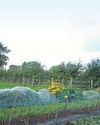
SOW GREEN THIS AUTUMN
Covering the soil with a green manure in winter offers many benefits and this is a good time to sow hardy types, says KG editor Steve Ott

A HISTORICAL HAVEN OF FRUIT AND FLOWERS
KG's Martin Fish takes time out from his own plot to visit a walled garden in Lincolnshire which has been home to the same family for more than 400 years

RESTORING THE BALANCE
The phrase regenerative gardening is often heard in gardening circles, but what is it? Can it help you to grow better veg? Ecologist Becky Searle thinks so, and tells us why
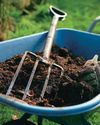
WASTE NOT, WANT NOT
Garden Organic's Anton Rosenfeld shares his expertise on using compost made from green bin collections with handy tips on getting the right consistency and quality
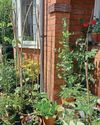
Celebrating Organic September!
In this special section we bring you four great features aimed at improving your crops and allowing nature to thrive
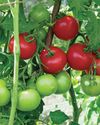
SEEING RED
Do your tomatoes have a habit of remaining stubbornly green? Or perhaps you're lucky to enjoy lots of lovely fruits - just all at once. Either way, Benedict Vanheems is here with some top tips to ripen and process the nation's favourite summer staple
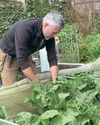
NEW KIDS ON THE BROCCOLI!
Rob Smith is talking broccoli this month with a review of the different types available and suggestions for some exciting new varieties to try

A NEW kitchen garden
Martin Fish is getting down to plenty of picking and planting on the garden veg plot, while Jill is rustling up something pepper-licking good!